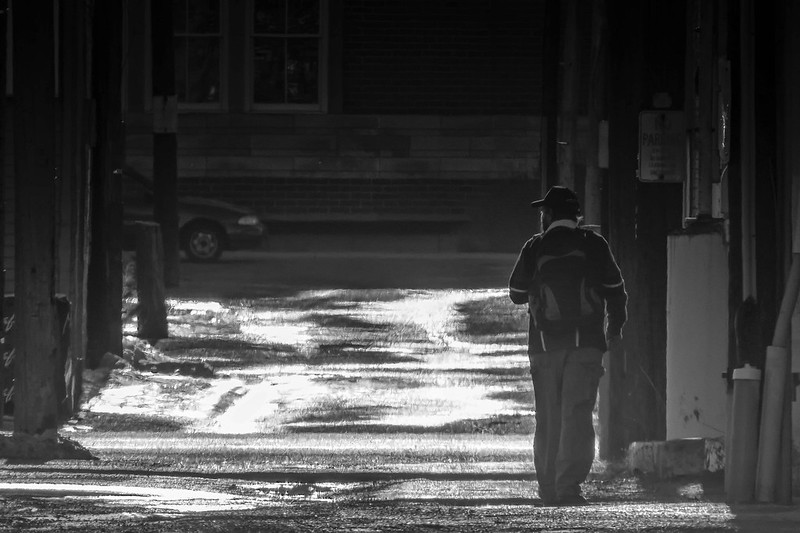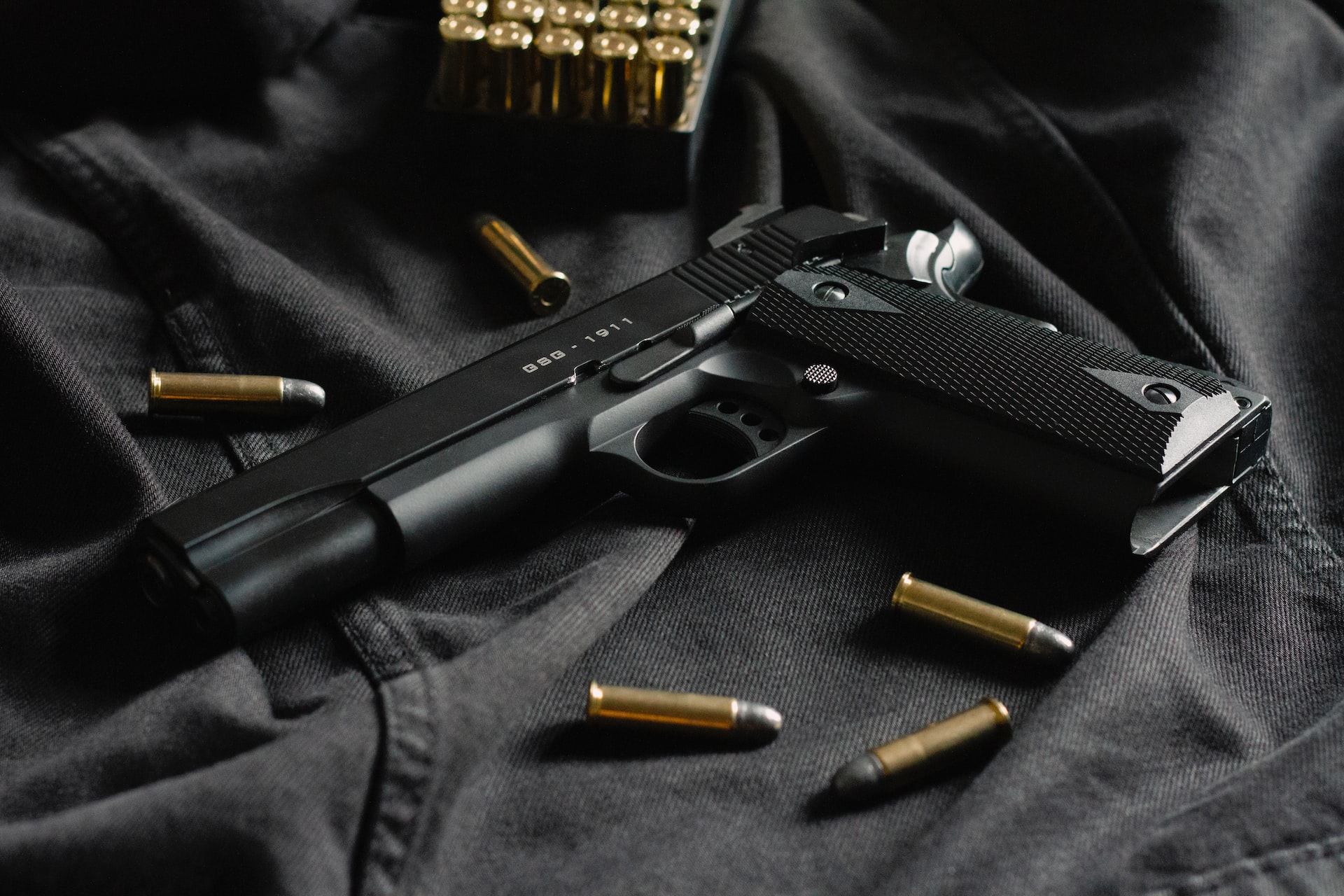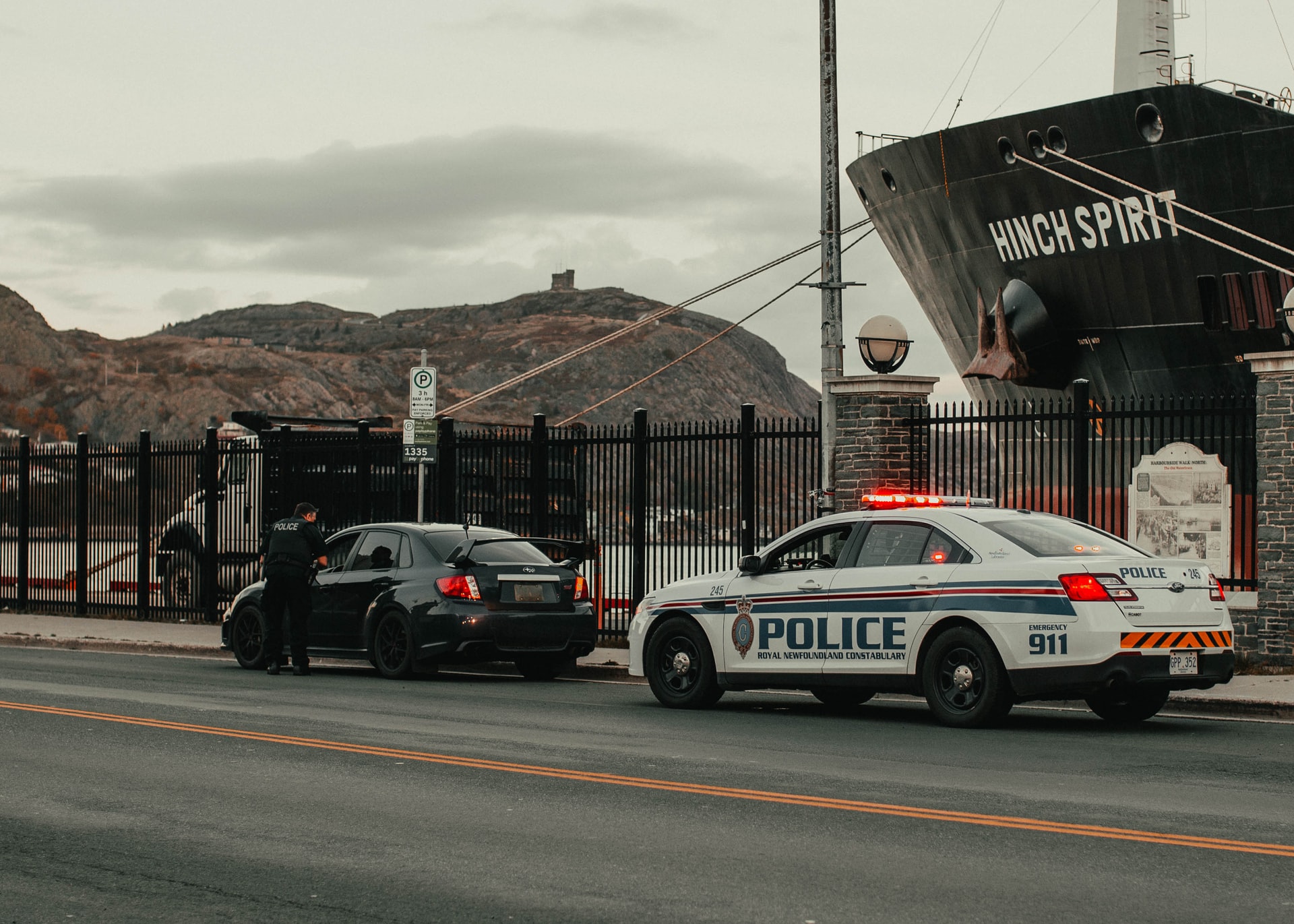This week we cover: the mitigating effect of low IQ on sentence, police officer notes being not admissible under the principled exception to the hearsay rule despite death of the officer, and exclusion of Bardree hearsay evidence
R v Plein (ONCA)
[Sept 14/18] Sentencing – Mitigating Effect of low IQ – 2018 ONCA 748 [Robert J. Sharpe J.A., David Brown J.A., David M. Paciocco J.A.]
AUTHOR’S NOTE: In this case the ONCA admitted fresh evidence of low IQ on appeal. This evidence substantially lowered the moral blameworthiness of the offender and resulted is a significantly lowered sentence.
Pertinent Facts
The Appellant assumed care for this mother and sister, both of whom were cognitively impaired and blind (para 1)
The Appellant was convicted of manslaughter and failure to provide necessaries of life in relation to both – his sister died a horrific death due to septic shock after suffering serious burns from the stove (he did not call 911 until she collapsed after several days) – his mother died from starvation (the attending doctor had never seen anything like it except in concentration camp photos) (Para 3-5)
He received a total sentence of 18 years imprisonment after trial (para 78)
Mitigating Effect of Low IQ
“Specifically, Dr. Day’s evidence shows Mr. Plein “to have largely Borderline to Low Average cognitive abilities”. His Full Scale IQ was 73, “which is in the Borderline range (4th percentile)”. He showed particular difficulties in some aspects of memory,”but his executive and other frontally mediated abilities are variable with signs of mental rigidity or inflexibility that may be having an impairing impact on functioning”. Simply put, when compared to most others, Mr. Plein has cognitive challenges that make it more difficult for him to analyze the situation he is in, and to make optimal decisions.” (Para 82)
“This evidence bears on the fitness of Mr. Plein’s sentence, a decisive issue in the trial. The fundamental principle of sentencing, codified in Criminal Code, s. 718.1, requires that a sentence be proportionate to the gravity of the offence and the degree of responsibility of the offender. Evidence of diminished intelligence can be important in identifying the moral fault and hence the degree of responsibility that should be ascribed to the offender for his acts: R v. Okemow, 2017 MBCA 59, 353 C.C.C. (3d) 141 (Man. C.A.), at para. 73.” (Para 83)
“In my view, the trial judge’s hard findings about Mr. Plein’s level of moral fault cannot stand in the face of the fresh evidence. Indeed, given how important the trial judge considered evidence of cognitive impairment to be, it is probable that if the trial judge had the benefit of Dr. Day’s evidence, it would have tempered his assessment of Mr. Plein’s moral fault.” (Para 93)
“On the current record, it cannot be assured that Mr. Plein authored the killing of his mother to unburden himself, and deliberately calculated the death of his sister. In light of Dr. Day’s evidence, Mr. Plein should not be sentenced as someone who was malevolent or depraved, but rather as someone who made grossly negligent and irresponsible decisions, and who failed to attend to the needs of his sister and mother with the same level of care he used when attending to his own direct interests. This itself describes a high level of moral fault for Mr. Plein, but it falls short of the extremes of moral fault the trial judge used in calculating Mr. Plein’s sentence.” (Para 94)
Sentence lowered from 18 to 14 years imprisonment. (Para 96)
R v Silva (ONSC)
[Oct 29/18] Principled Exception to Hearsay – Police Notes – 2018 ONSC 6457 [Favreau J.]
AUTHOR’S NOTE: In this case the exhibit handler of a drug seizure that involved Fentanyl turned up dead two weeks afterwards due to a Fentanyl overdose. His overdose was found to have resulted from ingestion and not accidental exposure. The Crown attempted to have his police notes tendered under the principled exception to the hearsay rule. The analysis of the Court shows how this type of evidence can be successfully excluded in future cases.
Pertinent Facts
“The accused, Carlos Silva, is charged with a number of offences related to the seizure of over 30 kilograms of cocaine, several kilograms of Fentanyl and a number of other items on March 30, 2017.” (para 1)
“The Crown brings an application to admit the notes of Detective Constable Michael Thompson as hearsay evidence pursuant to the principled exception to the hearsay rule.” (Para 4)
“Officer Thompson was one of the officers involved in the investigation in this case. On March 30, 2017, he was one of the officers who entered unit 706 at 12 Woodstream Blvd. and who remained in the apartment while awaiting the search warrant. Once the warrant was issued, he was the officer who opened and searched the suitcases in the closet, where he reported finding cocaine. He was also the Exhibit Officer that day, which means he was charged with collecting and tracking the exhibits.” (Para 135)
Thomson died two weeks after the seizure – no officers testified as to where he may have obtained the fentanyl (Para 136-7)
“Toxicology results have since confirmed that DC Thompson had 14 mg/ml of fentanyl in his system. This is roughly4 times the toxic limit. The coroner, Dr. Carlisle, has indicated he was unaware of any prescription for fentanyl.It is clear that DC Thompson died as a result of the ingestion of fentanyl. An expert opinion was sought which indicated that the product was ingested within the previous 24 hours, and that the quantity was too large for the concentration in DC Thompson’s blood to have been caused by mere contact with fentanyl.” (Para 138)
“Accordingly, given the proximity in time between the seizure of drugs on March 30, 2017 and Officer Thompson’s death on April 13, 2017, the police have not been able to rule out the possibility that the source of drugs consumed by Officer Thompson was not from the drugs seized in this investigation.” (Para 139)
The Principled Exception and Officer Notes
“The principled exception to the hearsay rule provides that out of court statements may be admitted if they meet the twin requirements of necessity and reliability: Bradshaw, para. 23.” (Para 149)
“In this case, given Officer Thompson’s his death, Mr. Silva does not dispute that the evidence at issue meets the necessity requirement.” (Para 150)
“A[s] explained in Bradshaw, at paras. 26 to 32, reliability can be demonstrated in one of two ways:
a. The circumstances under which the statement was made do not give rise to any concerns that the statement is untrue (referred to as “substantive reliability”); or
b. The truth of the statement can be sufficiently tested by means other than contemporaneous cross-examination(referred to as “procedural reliability”).” (Para 151)
“In this case, the Crown relies on the circumstances under which the documents authored by Officer Thompson were prepared. In Bradshaw, the majority explained substantive reliability as follows:
While the standard for substantive reliability is high, guarantee “as the word is used in the phrase ‘circumstantial guarantee of trustworthiness’, does not require that reliability be established with absolute certainty” (Smith, at p. 930). Rather, the trial judge must be satisfied that the statement is “so reliable that contemporaneous cross-examination of the declarant would add little if anything to the process” (Khelawon, at para. 49). The level of certainty required has been articulated in different ways throughout this Court’s jurisprudence. Substantive reliability is established when the statement “is made under circumstances which substantially negate the possibility that the declarant was untruthful or mistaken” (Smith, at p. 933); “under such circumstances that even a sceptical caution would look upon it as trustworthy” (Khelawon, at para. 62, citing Wigmore, at p. 154); when the statement is so reliable that it is “unlikely to change under cross-examination” (Khelawon, at para. 107; Smith, at p. 937); when”there is no real concern about whether the statement is true or not because of the circumstances in which it came about” (Khelawon, at para. 62); when the only likely explanation is that the statement is true (U. (F.J.), at para. 40).” (Para 152)
“In Bradshaw, the Court also explained that substantive reliability can arise from corroborative evidence in appropriate circumstances:
First, corroborative evidence must go to the truthfulness or accuracy of the material aspects of the hearsay statement (see Couture, at paras. 83-84; Blackman, at para. 57). Hearsay is tendered for the truth of its contents and corroborative evidence must go to the truthfulness or accuracy of the content of the hearsay statement that the moving party seeks to rely on. Because threshold reliability is about admissibility of evidence, the focus must be on the aspect of the statement that is tendered for its truth.2 The function of corroborative evidence at the threshold reliability stage is to mitigate the need for cross-examination, not generally, but on the point that the hearsay is tendered to prove….
Thus, to overcome the hearsay dangers and establish substantive reliability, corroborative evidence must show that the material aspects of the statement are unlikely to change under cross-examination (Khelawon, at para. 107; Smith, at p. 937). Corroborative evidence does so if its combined effect, when considered in the circumstances of the case, shows that the only likely explanation for the hearsay statement is the declarant’s truthfulness about, or the accuracy of, the material aspects of the statement (see U. (F.J.), at para. 40). Otherwise, alternative explanations for the statement that could have been elicited or probed through cross-examination, and the hearsay dangers, persist.
While the declarant’s truthfulness or accuracy must be more likely than any of the alternative explanations, this is not sufficient. Rather, the fact that the threshold reliability analysis takes place on a balance of probabilities means that, based on the circumstances and any evidence led on voir dire, the trial judge must be able to rule out any plausible alternative explanations on a balance of probabilities.” (Para 153)
“The Crown argues that the documents authored by Officer Thompson that it seeks to tender for the truth of their content are reliable because of the circumstances under which they were prepared and because of the corroborative evidence that confirms their accuracy.” (Para 153 (sic))
“given the circumstances of Officer Thompson’s death, I am not satisfied that the circumstances under which the notes were made offer any guarantee of trustworthiness. There is a close nexus in time between the investigation and Officer Thompson’s death. The Crown has candidly admitted in the email quoted above that it is not possible to rule out the fact that Officer Thompson may have obtained the drugs from which he died from this particular seizure. He was in fact the officer who found he controlled substances in the suitcases and, under the circumstances, it is difficult to say that his notes and records are trustworthy given the circumstances under which they were made.” (Para 155)
“In contrast, Officer Thompson’s notes from March 30, 2017, record his observations and actions that day. They include a detailed account of what he saw and seized when he opened the suitcases after the warrant was obtained. He describes various bags, their respective locations in the suitcases and the description of substances found in those bags.The Crown argues that this evidence can be verified by photos and the evidence from other officers who were present that day. However, it is Officer Thompson who opened the suitcases. It does not appear that anyone else was with him when he opened the suitcases and first searched them. Officer Dagonas’ evidence is that Officer Thompson conducted the search in the bedroom while she was in a common room of the apartment. Officer Thompson brought the suitcases into to the common area to be photographed after he had opened them and advising that he found cocaine in the suitcases.” (Para 159)
“Given the circumstances of his death and the Crown’s inability to ascertain the source of the drugs that caused Officer Thompson’s death, and in the absence of evidence that specifically corroborates his observations when he opened the suitcases, in my view it is not possible to say that his notes are reliable.” (Para 160)
“The Crown argues that, at worst, the quantity of drugs Officer found may have been larger than the quantity he reported finding. In my view, this argument is not persuasive. The issue is whether his notes are reliable based on the circumstances in which they were made and available corroborative evidence. The fact that they may underreport what was found does not assist in making a finding of reliability.” (Para 161)
The admissibility of the notes was denied (Para 162)
R v Poirier (ABQB)
[Oct 26/18] The Baldree Exception to Hearsay- 2018 ABQB 872 [J.H. Goss J.]
AUTHOR’S NOTE: Cellphones seized by the police can be used to create evidence in a multitude of ways. One that comes up occasionally is a police officer’s use of a drug dealer’s phone after their arrest to take drug calls or text messages. In this case, the application by the Crown failed because the police failed to try to bring caller to court and the call volume was relatively low.
Pertinent Facts
“On July 26, 2017, Mr. Poirier and his passenger were driving in a white Lexus IS 250 when they were stopped by EPS members for failing to stop at a stop sign. Mr. Poirier was subsequently arrested on parole breaches, and the passenger was ultimately arrested for possession of a controlled substance. After a search of the Lexus, Mr. Poirier was arrested for possession for the purposes and weapons offences.” (para 6)
“During the investigation, at 10:00 pm, Constable Lockert was asked to answer phone calls or any messages from an LG phone that had been seized. Between the time of 10:03 pm and 10:47 pm, the phone received seven phone calls and three text messages. The text messages were unreadable because the phone was locked.” (Para 96)
Some of the phone calls were non-probative. The following came the closest:
“The second phone call was at 10:11pm. It was another male, and he stated, “I’ve got makeup. You good to meetup?” to which the officer replied, “I’ll be 20 minutes.” The male then hung up.” (Para 98)
“At 10:22 pm, a third phone call came in. A male stated, “Hey, it’s Ralph.” He paused, and then he said, “Kael, right?” Then he phrased a question, “You got girls? How much?” to which the officer answered, “60.” The male then stated, “Okay. I’ll take two. How long?” The officer replied, “30 minutes” to which the male stated, “Okay. Hurry up. I’m at home.”” (Para 99)
“Constable Lockert did not take any further steps to investigate those telephone numbers that appeared on the cell phone when he answered the calls as he was not asked to do so. He has the ability, as a police officer, to input numbers into his computer system and see if they are associated to any person. From those databases, he would be able to determine the people associated to the numbers and where they live, if that information has been entered.” (Para 106)
A police drug expert testified: “The phone call at 10:22 pm indicates that Ralph believes the owner of that phone to be Kael and that Kael knows who Ralph is, indicating that this isn’t the first transaction that’s occurred between Kael and Ralph. “Girls” refers to cocaine hydrochloride in drug jargon. The price of $60 is the going rate for a gram of cocaine hydrochloride. “I’ll take two” indicates that he wants two grams of cocaine hydrochloride brought to him. There is no address given, leading to the assumption that Kael knows where Ralph’s home is.” (Para 110)
The Baldree Exception to Hearsay
“”Hearsay evidence is presumptively inadmissible because of the difficulties inherent in testing the reliability of the declarant’s assertion”: Baldree at para 31. Other concerns with hearsay evidence relate to the declarant’s perception, memory, narration, and sincerity: Baldree at para 31, relying on Khelawon at para 2 and R v Starr, 2000 SCC 40 at Para 159.” (Para 118)
“Hearsay evidence may be admitted under one of the exceptions to the hearsay rule, or it may be admitted if indicia of reliability and necessity are established on a voir dire.” (Para 120)
“Necessity means “reasonably necessary”: R v Khan, [1990] 2 SCR 531 at 546. Necessity can arise in a variety of situations, but generally, necessity will arise when “the relevant direct evidence is not, for a variety of reasons, available”: R v Smith, [1992] 2 SCR 915 at 934. The trial judge must be satisfied that the evidence is unavailable despite reasonable efforts to obtain it. This may mean that the Court must look into the reasons for the unavailability. “[I]n deciding the question of necessity [the court] may well question whether the proponent of the evidence made all reasonable efforts to secure the evidence of the declarant in a manner that also preserves the rights of the other party”: Baldree at para 68, citing from Khelawon at para 104.” (Para 121)
“Like this case Baldree involved a situation in which a police officer answered a call on the accused’s cell phone after his arrest and agreed to deliver drugs to the caller. The Crown wanted to admit the contents of the call for the truth of its contents but made no effort to secure the evidence of the caller. The police did not attempt to interview or even find the caller despite the fact that he provided his address during the call. There was no explanation given as to why no efforts were made to locate the declarant: Baldree at para 68.” (Para 123)
“In a case such as this the number of callers could also inform necessity. If there were numerous callers the Crown would not be expected to attempt to locate them all and convince them to testify: Baldree at para 72.” (Para 124)
“As well, necessity and reliability work together, that is, if the reliability of the evidence is sufficiently established, the necessity requirement may be relaxed: Baldree at para 72, relying on Khelawon at para 86.” (Para 127)
“In R v Blyan, 2017 ABCA 302, police arrested the accused for breach of curfew and upon searching the accused, the police found 28 new baggies, a digital scale, a knife, a cell phone and a variety of drugs including methamphetamine and cocaine.” (Para 128)
“The cell phone rang approximately every five minutes over a period of one to two hours, ringing constantly between 1:30 am and 3:30 am. A police officer answered one call and the caller said there were a bunch of people that needed a “hook-up.”” (Para 129)
ABCA found no palpable and overriding error in the Blyan judge’s treatment of the evidence in those circumstances (Para 131)
“I am not satisfied that the criterion of necessity has been made out on the evidence. I am not satisfied that a reasonably diligent effort was made to locate the individual named Ralph with the information the police had. In fact no effort was made. It can be speculated that the witness, if located, may have been reluctant to give testimony but that in itself is not enough to establish that the witness is unavailable. Expediency does not justify the broad application of the hearsay exception.” (Para 133)
“Regarding the other phone calls, I am also not satisfied that the threshold reliability criterion has been met. There are not sufficient circumstantial guarantees of trustworthiness to compensate for the specific hearsay dangers raised by the statements made. In this case the officer monitored the phone from 10:03 pm until 12:11 am, a period of 2 hours, 8 minutes. Between the time of 10:03 pm and 10:47 pm, a period of 44 minutes, the phone received seven phone calls and three text messages. No other calls were received. The substance of the calls can be consistent with drug trafficking, asDetective Pilon opined, but they can also be consistent with innocent calls, particularly since the phone was quiet from10:47 pm to 12:11am, a period of 1 hour and 24 minutes.” (Para 134)






